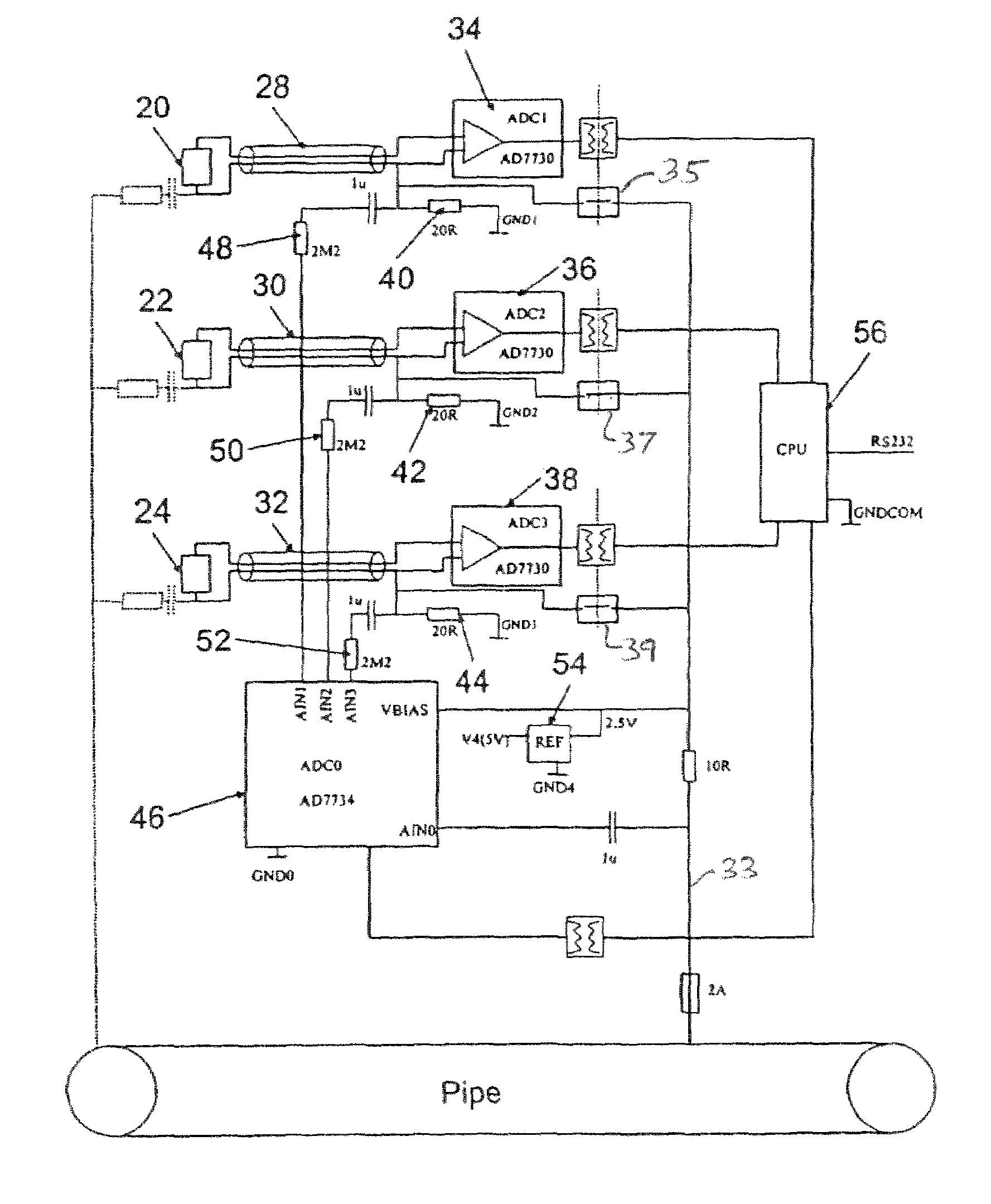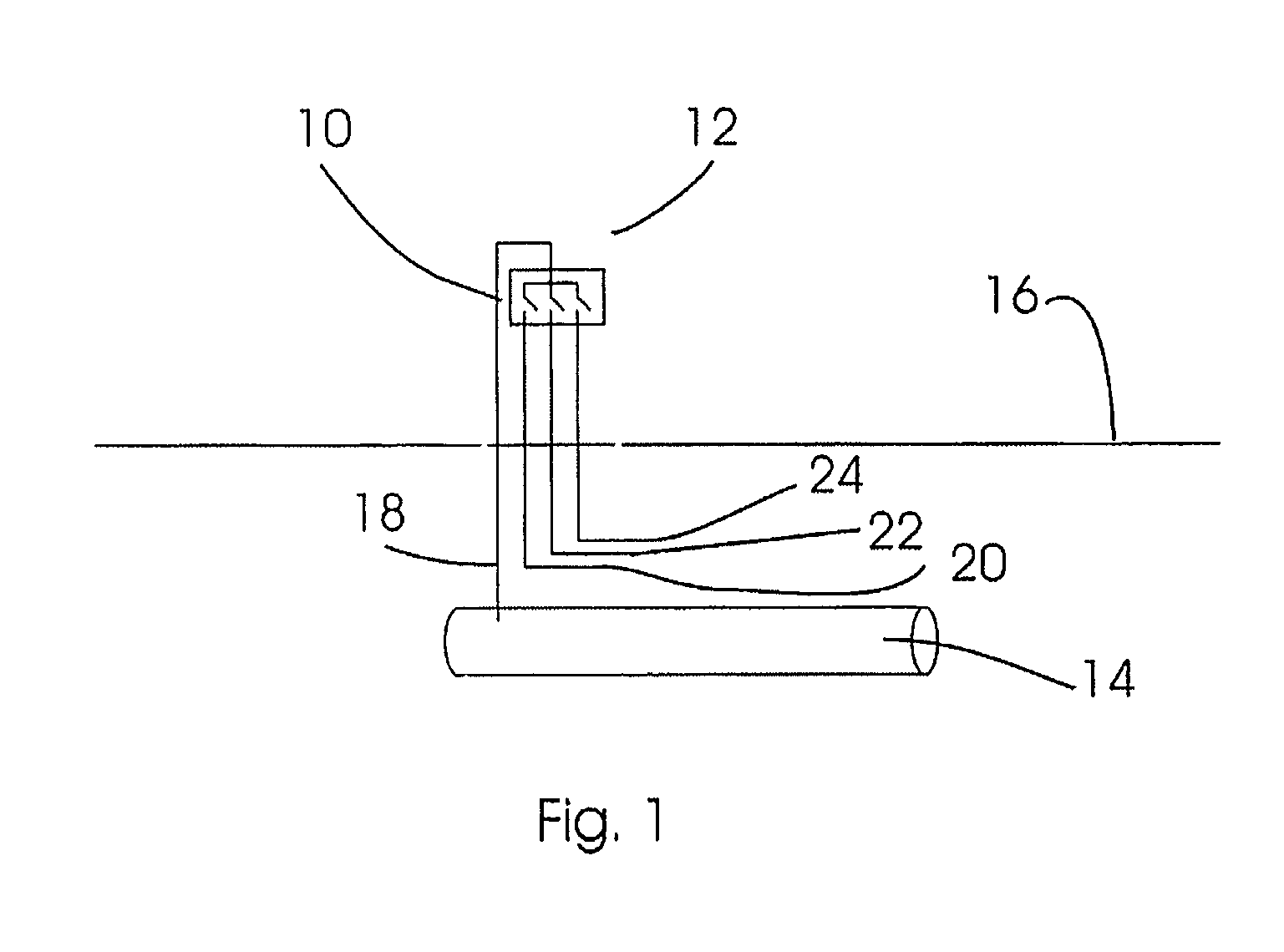Method and a system of diagnosing corrosion risk of a pipe or a pipeline in soil
a technology of corrosion risk and method, applied in the field of detection of corrosion of catho, can solve problems such as inability to provide reliable criteria, and achieve the effect of reducing thickness
- Summary
- Abstract
- Description
- Claims
- Application Information
AI Technical Summary
Benefits of technology
Problems solved by technology
Method used
Image
Examples
Embodiment Construction
[0083]FIG. 1 illustrates the schematic set-up of the measurement system according to the present invention. The measurement system 10 is placed inside a measuring post 12. Measuring posts are placed along high pressure pipelines such as illustrated by a piece of a pipeline 14 buried beneath the surface of the ground 16. As the pipelines are usually placed along high voltage power lines, the measuring post 12 may also comprise measuring instruments for measuring and monitoring the performers of the high voltage power lines.
[0084]The measurement system 10 has at least one electrical connection to the buried pipeline 14 constituted by an electrical wire 18. Buried in the ground, preferably parallel to the pipeline 14 are at least one probe and preferably three probes designated the numerals 20, 22, 24.
[0085]The measuring system 10 may also be placed in a specialised post separate from the standard measuring post 12.
[0086]FIG. 2a is a schematic representation of the measurement system 1...
PUM
| Property | Measurement | Unit |
|---|---|---|
| spread resistance | aaaaa | aaaaa |
| spread resistance | aaaaa | aaaaa |
| voltage | aaaaa | aaaaa |
Abstract
Description
Claims
Application Information
 Login to View More
Login to View More - R&D
- Intellectual Property
- Life Sciences
- Materials
- Tech Scout
- Unparalleled Data Quality
- Higher Quality Content
- 60% Fewer Hallucinations
Browse by: Latest US Patents, China's latest patents, Technical Efficacy Thesaurus, Application Domain, Technology Topic, Popular Technical Reports.
© 2025 PatSnap. All rights reserved.Legal|Privacy policy|Modern Slavery Act Transparency Statement|Sitemap|About US| Contact US: help@patsnap.com



